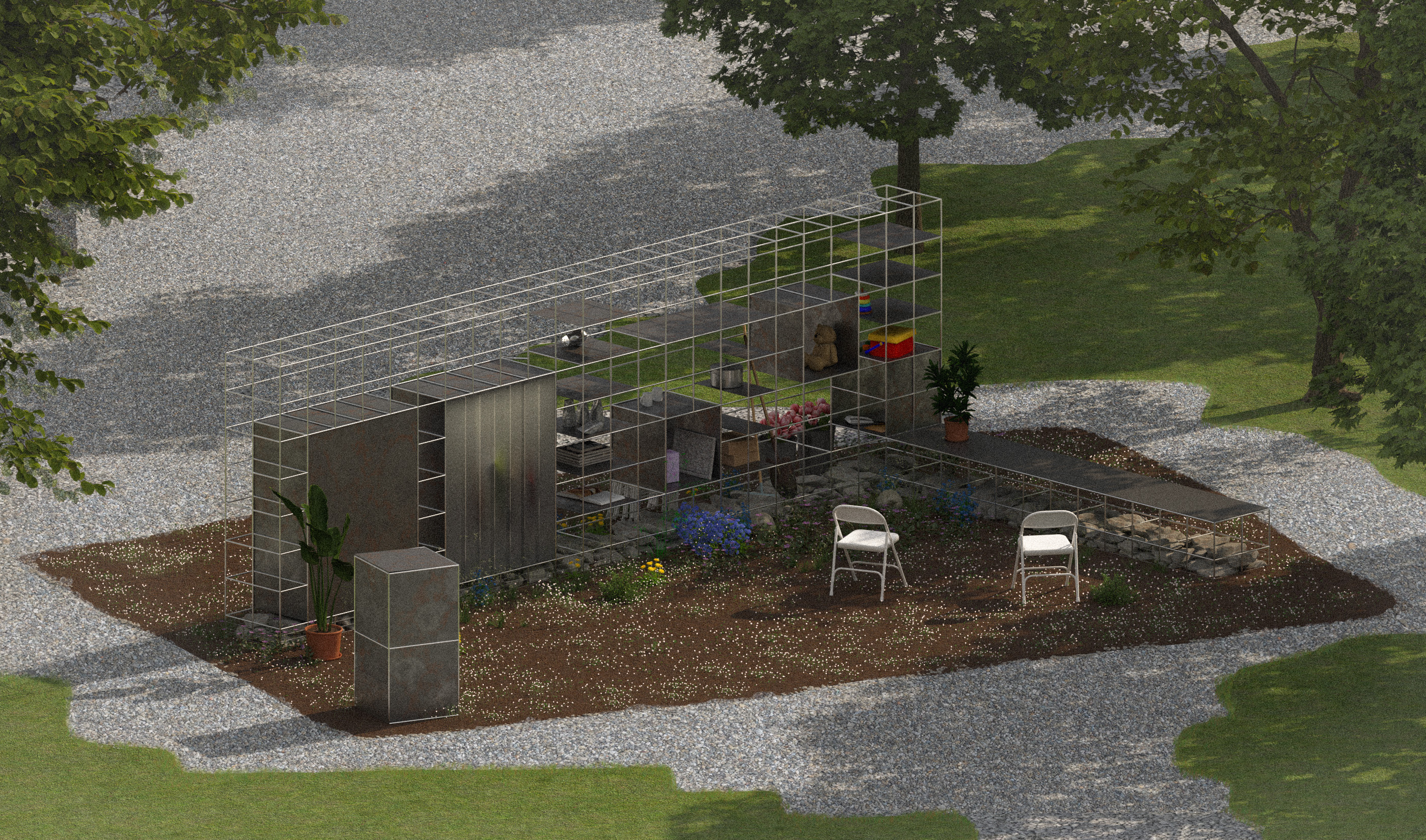

Garden Shelf
The shelf is a place of conflict. What gets foregrounded? What is recessed? The shelf becomes a hierarchy of things, of inputs and outputs. The shelf is an economy, where things are imbued with value or scorned by dust.
Garden Shelf, quite directly, proposes to install a public shelf in the Wallach Garden. The shelf becomes a site for the redistribution of goods that, more broadly, may highlight collective practices of production and consumption. If waste is simply matter out of place, as so understood by Mary Douglas, Garden Shelf provides a site of redemption, where one person’s refuse can be stored for someone else to reclaim it. Waste, accordingly, is understood here as a missed opportunity for collectively assessing value.
Our proposal operates with the belief that many contemporary crises are underwritten by a structuring of the individual as the primary social unit. And it is from the individual that the twin notions of value and waste emanate: the value of a good is defined by how much an individual is willing to pay for it; waste is defined as that which an individual is not willing to pay for. Furthermore, we are able to operate as atoms, ignoring the supply chains that precede consumption and the vast systems of waste management that follow it. A necessary transition to pluralistic awareness requires not only new economic systems, but a physical restructuring of the built environment to underscore the commonality of waste and value. Accordingly, Garden Shelf proposes its public shelf as a device for habituating exchange and facilitating community valuation.
Formally, the project takes its cues from gabion walls– mesh baskets that are substantiated with rock infill. In our case, a gridded structure is infilled with various shelves, cavities, and, gradually, miscellaneous objects. For tectonic support, rocks are used to fill the bottom of the structure, anchoring it to the ground. The rest of the structure is spared of rocks, and instead asks to be substantiated by the contributions of passersby. A pantry asks for food; compost asks for food scraps; a wardrobe asks for clothing; rocks ask for lichen; a bench asks for people; dirt asks for growth. The resultant object is a 24’ by 2’ shelf, running east-west, with an adjoining 12’ by 2’ bench that forms an L. Opposing the bench is the 2’ by 2’ compost bin that suggests an enclosure. The 20’x30’ parcel that holds the shelf is to be covered in dirt so plants can grow freely around the shelf.
Over the course of its installation the project will become densely populated with collective productions of value. One person’s refuse becomes another’s sustenance. And underfoot, plants and lichens may grow on their own volitions. Microterritories of light and shade emerge along the shelf, deferring to the plants and critters that may find comfort there. The shelf becomes a garden, site to its own economy and ecology, authored by new formations of value.
Harvard Radcliffe Institute Public Art Competition 2023
In collaboration with Zak Leazer